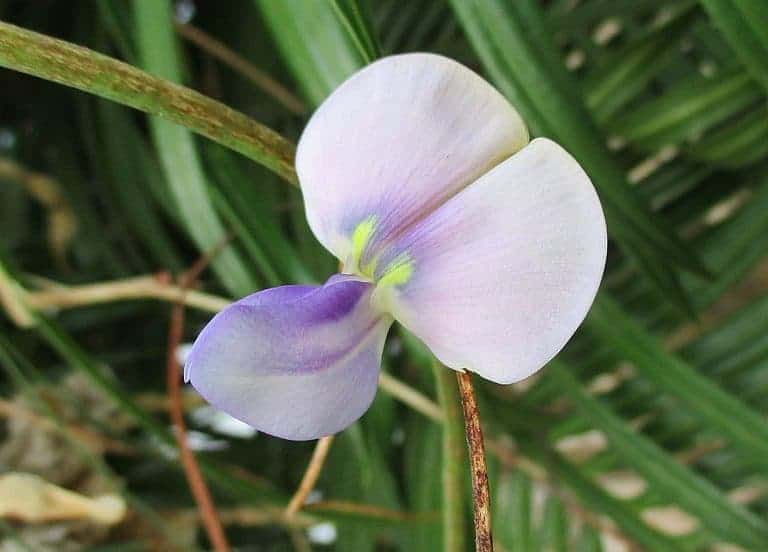Black-eyed peas are not only a Southern treat, but are eaten all across the world. A variety of cowpea, black-eyed peas are in the same family as beans but are technically a different species from your regular common beans.
Black-eyed peas thrive in hot climates similar to their native West Africa, but if you have a long enough growing season, you can grow them in many temperate areas, even up in the US Northeast and Northern Europe.
Since black-eyed peas are related to beans, they have similar planting guidelines. Whether you plant them in the ground or in a pot, always water in your black-eyed peas after sowing, and make sure the soil is warm, moist, but not soggy for optimal germination.
|
Black-Eyed Pea Type |
Depth |
Min. Spacing |
Min. Row Spacing |
Container Size (dia) |
|
Climbing/Pole |
1-2” (2.5-5 cm) |
5” (15 cm) |
18” (45 cm) |
18” (45 cm) |
|
Bush |
1-2” (2.5-5 cm) |
5” (15 cm) |
18” (45 cm) |
15” (38 cm) |
On this page:
How Deep to Plant Black-Eyed Peas
When there is no more risk of frost and soil temperatures have warmed to 70°F (21°C), sow black-eyed pea seeds about 1 inch (2.5 cm) deep, up to 2 inches (5 cm).
If soil temperatures are still cool, you can cover it with clear plastic after planting in order to warm up the soil faster, then remove after sprouts emerge.
Similar to beans and peas, I prefer to plant at least 2 black-eyed peas per hole in order to better guarantee success, and then thin out to 1 plant per hole as seedlings break through the soil.
How Far Apart to Plant Black-Eyed Peas
Black-eyed peas have similar spacing requirements as beans. Space black-eyed peas at least 5 inches (15 cm) apart.
If you’re planting several rows of black-eyed peas, you can space them at least 18 inches (45 cm) apart, however, row spacing guidelines are for farms and market gardens, so as a home gardener, you can space each row closer, but I still wouldn’t plant rows closer than 12 inches (30 cm) to avoid overcrowding and allow more airflow between each row.

Related Questions About Planting Black-Eyed Peas
Can You Grow Black-Eyed Peas in Containers?
Black-eyed peas are suitable to grow in containers, and they have similar requirements as beans. However, you should be aware that black-eyed peas can come in pole (climbing) and bush varieties.
Pole black-eyed peas need a large container, at least 18 inches (46 cm) in diameter, to avoid getting root bound. Many pole varieties can easily grow more than 6 feet tall.
Bush black-eyed peas can be planted in smaller containers, 15 inches (38 cm) in diameter. I have even gotten away with planting three bush black-eyed peas in a 12-inch (30-cm) wide, 2-gallon (7.5-L) pot, although it was definitely pushing it.
When Do You Plant Black-Eyed Peas?
As stated above, you want to plant after the threat of frost is gone and the soil has warmed up. Ideal soil temperature for optimal germination is at least 70°F (21°C). Slightly cooler soil will slow down germination, and cold soil will prevent it.
In addition, ensure you have a long enough growing season for your variety of black-eyed pea and plant as early as you can (temperature permitting). Since most people grow them as shelling beans and pick when fully mature and the pods are dry, it can take anywhere from 60 to 100 days from sprouting to get a harvest.
How Long Does It Take Black-Eyed Peas to Sprout?
Germinating does not take very long, and black-eyed peas sprout fast like beans, usually taking between 5 to 14 days. Colder weather will slow down or prevent germination.
You can also soak your seeds overnight to increase the speed of germination.
Can You Plant Store-Bought Black-Eyed Peas?
Most black-eyed peas from the grocery store can germinate.
Why Are My Black-Eyed Peas Not Growing?
If your black-eyed peas are not germinating, there are several possible reasons.
If you’ve waited longer than 15 to 20 days, it may be that the soil temperature is too cold. It’s also possible that your seeds have started to rot before they could germinate. Soak your seeds overnight before planting and sow more than one seed per hole. I recommend 3 to 4 seeds if you’re having germination problems, but 2 to 3 seeds should normally suffice.
Why Are My Black-Eyed Peas Not Blooming?
Like other beans, especially the pole/climbing varieties, black-eyed peas need to get established before they start blooming. In my experience, it takes at least a month, sometimes almost two months, to go from sprouting to the first blooms. If you notice you’re still not getting flowers more than two months later, you can try adding small amounts of a fertilizer for blooming or fruiting (NPK with higher values for the last two numbers, which correspond to phosphorus and potassium).
